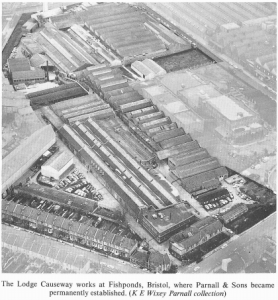Looking at the Panther Project objectively it could be described as an endless collection of problems in an aircraft shaped package. The first and most pressing issue that we have is that there are no original construction drawings to work from. To build a three-dimensional shape we need accurate section shapes to create the fuselage. We can do this by reverse engineering the aircraft, i.e. recreating the air frame as a virtual model before starting to build. Given some simple geometric constants and the knowledge that an airplane must be a fair shape (without any unwanted humps or hollows) it is possible to create an envelope model that conforms very closely to the original outside surface.
By slicing up the envelope model we can achieve the section shapes which form the basis of the air frame. By constantly checking and rechecking against the photographic data we can check and refine the shape, and where there are discrepancies we can apply some simple Euclidian based logic geometry to direct changes. In this sort of work it is essential to first find and apply the constants, before looking at the rate at which other things change.
We are lucky that we do have access to a quantity of technical information specific to the Panther which illustrates some of the aircraft, but we are left with holes in our understanding which must be overcome. How we do this depends on the hole. The pilot’s seat provides a good example of this. We only have two images that show the pilot’s seating arrangement, and the quality is poor. What they show is a simple moulded plywood bucket seat, lightened and stiffened on the edges, and supported by a plywood structure that fixes to the pilot’s control structure arrangement. What we also have is a library of images that show other aircraft that were being constructed by Parnall in the same period.

A flick through the archive reveals a very detailed set of images showing a very similar arrangement on another aircraft designed by Harold Bolas. Until further information comes to light, this becomes our best estimate. We are also heavily directed by looking at patent drawings filed by Harold Bolas to understand his logic and ways of overcoming problems and to find commonalities of construction.
Information relating to aircraft construction of this period is limited. There are some good published works that relate to the rules of wooden air frame construction and are helpful but what we lack is the specific “how-to” knowledge to actually get the material into the correct shape, joined up, and into the jig. Inevitably this has led to a certain amount of trial and error and huge amounts of lateral thinking to recreate the techniques that must have been common practice to the men on the shop floor who made these airplanes originally.
We have a massive head start in this with the team’s existing knowledge relating to small marine craft building and applying them to an aircraft. At the moment we are steaming the ash stiffeners and applying them to the plywood frames. This highlights a problem that is likely to run right through the build – that of clamps. It’s fairly well known in boat building that one never has enough clamps – it turns out that in aircraft construction it is even more of an issue. We have been experimenting with staples and creative wedge application in a bid to make things go together and stay that way. I’m not sure that we will ever fully overcome our clamp deficiency. A metaphor for life, perhaps? (Images © Kenneth E Wixey )






